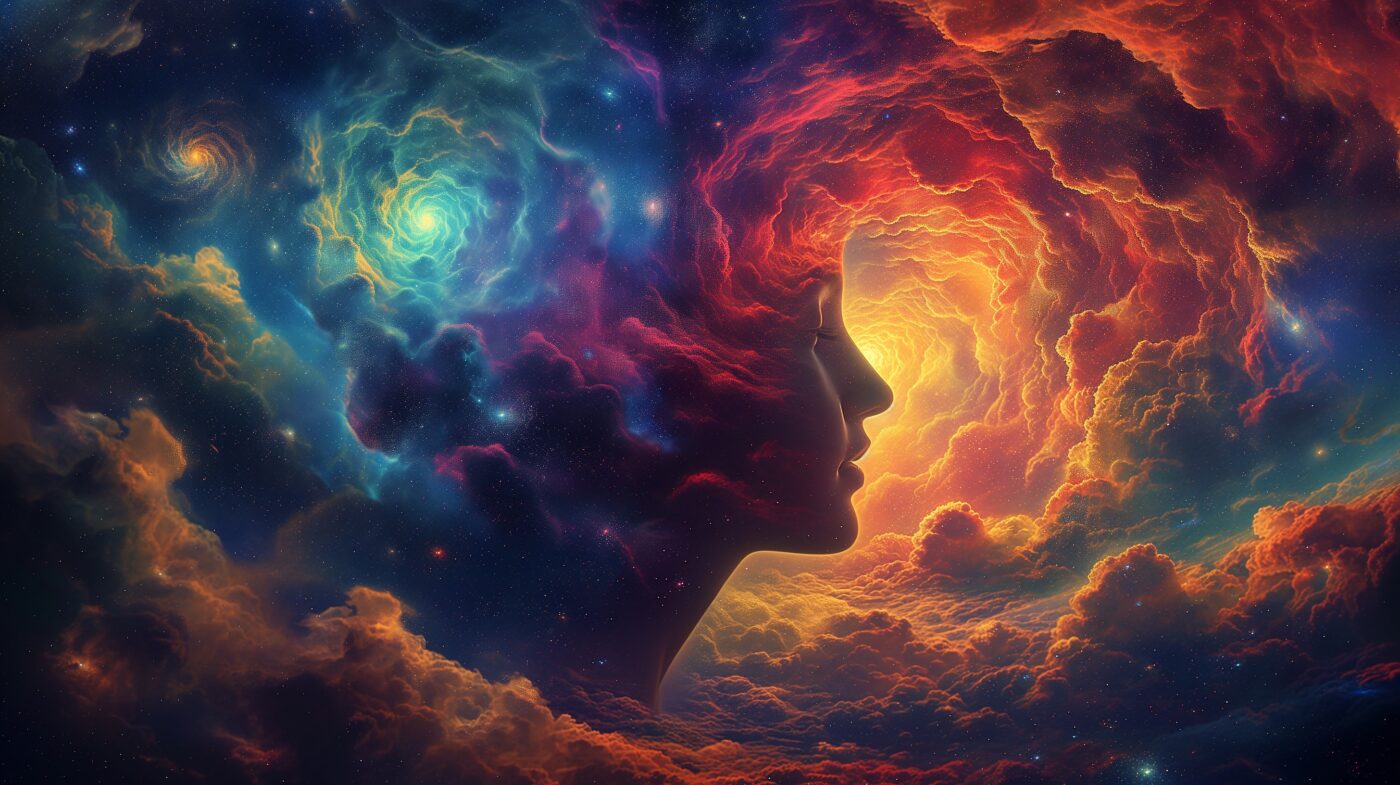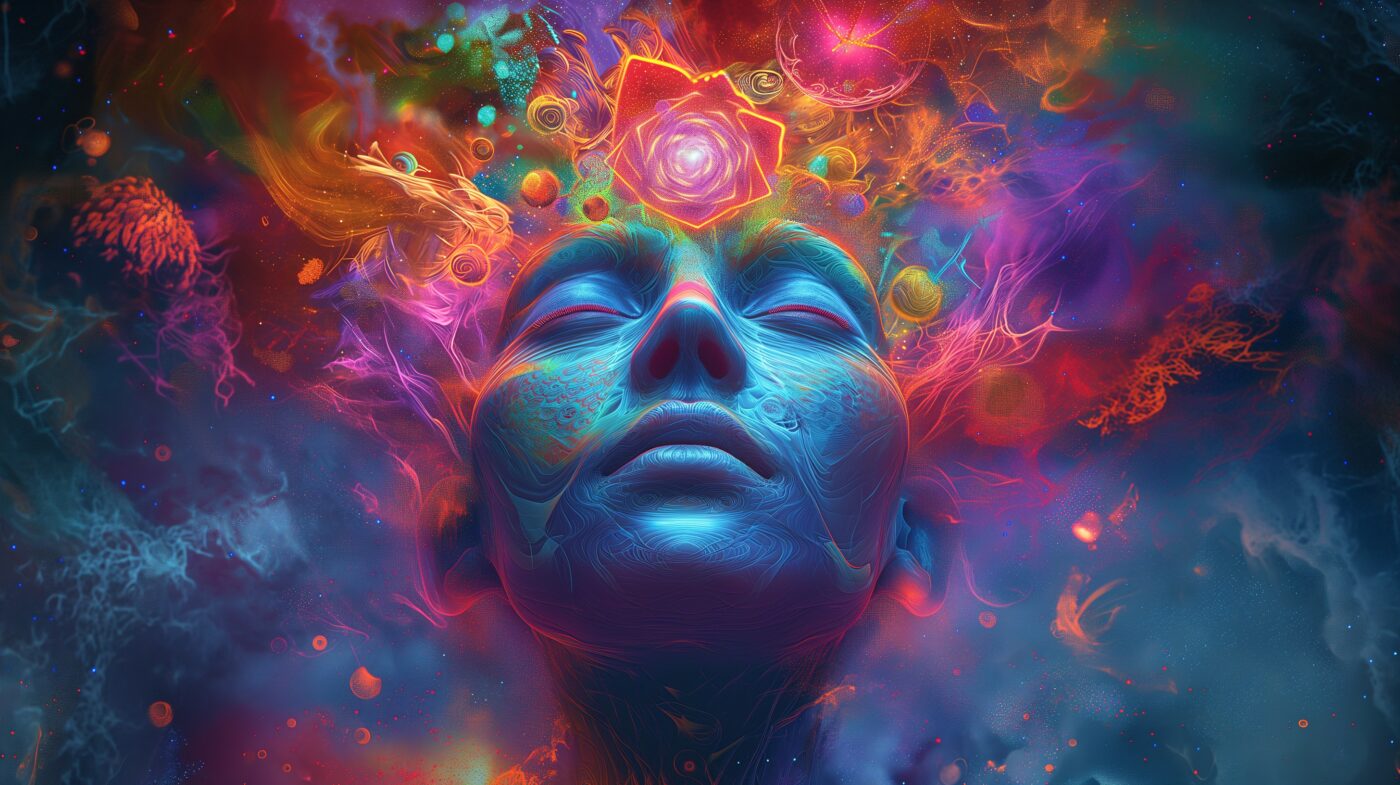Chitta, Purusha, and Atman are three important concepts in Indian philosophy, particularly in yoga and Vedanta.
Chitta refers to the mind, which includes thoughts, emotions, memories, and perceptions. The changing, fluctuating aspect of consciousness is influenced by conditioning, habits, and karma. In yoga, the goal is to purify and refine the mind through practices like meditation and self-reflection to cultivate virtues like compassion and wisdom and ultimately realize the true nature of consciousness. The term chitta is often used in the context of the Four Functions of the Mind, which include manas (the lower mind that processes sensory information), buddhi (the higher mind that discerns truth from falsehood), ahamkara (the ego or sense of self), and Chitta (the storehouse of memories and impressions).
On the other hand, Purusha refers to the true self or inner consciousness beyond the mind and its fluctuations. It is unchanging, eternal, and pure consciousness that is the same in all beings. In yoga, the goal is to realize the true nature of consciousness by transcending the limitations of the mind and identifying with the witness or observer of the mind (Purusha). This realization leads to liberation from the cycle of birth and death and the attainment of peace and inner freedom.
Atman is the ultimate reality or ground of being beyond all concepts and limitations. It is the same as Brahman, the supreme consciousness that underlies all of existence. In Vedanta, the goal is to realize the true nature of the self (Atman) as identical to the ultimate reality (Brahman) through practices like self-inquiry and meditation. This realization leads to liberation from the illusion of separateness and attaining inner peace and bliss.
What Are the Subtle Differences Between Purusha and Atman?
Purusha and Atman are two related but distinct concepts in Indian philosophy. While there is some overlap between the two, they have different origins and are used in different ways by different philosophical schools.
Purusha is a term that was first mentioned in the ancient Samkhya philosophy, which dates back to around the 3rd or 4th century BCE. In Samkhya, Purusha is considered a non-material entity or principle that is distinct from Prakriti (matter/nature). Pure consciousness or subjectivity observes the material world but is not a part of it. The goal of Samkhya is to attain liberation by realizing the distinction between Purusha and Prakriti and recognizing that Purusha is free from all material limitations and sufferings.
Atman, on the other hand, is a term that appears in the Upanishads, a collection of ancient texts that form the basis of Vedanta philosophy. The Upanishads date back to around the 8th century BCE, and they explore the nature of the self and ultimate reality. In Vedanta, Atman is considered the true self or innermost essence of consciousness, identical to Brahman, the ultimate reality or ground of being. The goal of Vedanta is to attain liberation by realizing the identity of Atman and Brahman and recognizing that the individual self is not separate from the ultimate reality but rather an expression of it.
While Purusha and Atman share some similarities, such as the idea that they represent a transcendent, unchanging aspect of consciousness, different philosophical schools use them in different ways. Purusha is more narrowly focused on the distinction between the observer and the observed, while Atman is more broadly focused on the identity between the individual self and ultimate reality. However, both concepts ultimately point towards the same realization of liberation and recognizing the ultimate truth.
To make things clear, you can say that Chitta, Purusha, and Atman are three interrelated concepts in Indian philosophy that relate to the mind, the true self, and the ultimate reality, respectively. While Chitta represents the changing, fluctuating aspect of consciousness that can be purified and refined, Purusha represents the unchanging, eternal aspect beyond the mind, leading to liberation when realized. Atman represents the ultimate reality that underlies all of existence and can be realized as identical to the true self through practices like meditation and self-inquiry.
Definition of Chitta in Samkhya and in Advaita Vedanta
In the philosophies of Samkhya and Advaita Vedanta, “Chitta” (often interpreted as ‘mind’ or ‘consciousness’) is a fundamental concept, but it’s understood differently in each.
In Samkhya, one of the oldest schools of Indian philosophy (dates back to 1500 BCE), Chitta is seen as part of Prakriti (nature or matter). It’s not just the mind or intellect but encompasses the entire mental framework, including the mind (Manas), intellect (Buddhi), and ego (Ahamkara). In this view, Chitta is a part of the material world and is subject to change and evolution.
Advaita Vedanta (dates back between 200 BC and 200 AD), a non-dualistic school of thought, has a different take. Here, Chitta is often linked to Brahman, the ultimate, unchanging reality. Advaita Vedanta sees the individual’s consciousness as a manifestation of Brahman. In this philosophy, Chitta is more about pure consciousness, uncolored by mental processes like thought and perception. It’s not seen as part of the material world but as the underlying reality that transcends it.
The Yoga Sutras of Patanjali, a foundational text of the Yoga school, offers a synthesis. Patanjali acknowledges the existence of both individual consciousness (akin to Samkhya’s view) and a universal consciousness (aligning more with Advaita Vedanta). The Yoga Sutras focus on controlling the modifications of Chitta (like thoughts and emotions) to achieve a state of pure consciousness, where the individual realizes their connection with the universal.
Chitta in Patanjali’s Yoga Sutras
In the Yoga Sutras of Patanjali, “Chitta” (often translated as “mind-stuff” or “consciousness”) is a central concept. Patanjali’s Yoga Sutras describe Chitta as the sum total of mental processes or the mind in its entirety. It includes three key components:
- Manas: Often translated as the mind, it’s the aspect that processes sensory input and is responsible for the reflexive, instinctual responses.
- Buddhi: This is the intellect or wisdom aspect of the mind. It’s responsible for discernment, understanding, and decision-making.
- Ahamkara: This is the ego, the sense of ‘I-ness’ or individuality. It’s what distinguishes and separates the individual from the rest of the world.
In the Yoga Sutras, Patanjali emphasizes the importance of understanding and controlling Chitta to achieve Yoga, or the union of the individual self with the universal consciousness. The fluctuations (Vrittis) of Chitta are seen as the primary obstacle in achieving this state of union. These fluctuations are the various forms of thoughts, emotions, and perceptions that constantly flow through the mind.
Patanjali outlines the practice of Yoga as a way to calm these fluctuations, bringing the mind to a state of stillness and clarity. Through practices like meditation, ethical disciplines, physical postures, and breath control, a practitioner can achieve a state of deep concentration and, ultimately, Samadhi, where the individual consciousness merges with the universal consciousness.





